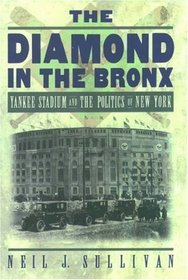Search -
The Diamond in the Bronx: Yankee Stadium and the Politics of New York
The Diamond in the Bronx Yankee Stadium and the Politics of New York
Author:
No sport has mattered more to Americans than baseball--and no team has had a greater impact on baseball than the New York Yankees. Now Neil Sullivan delivers a narrative worthy of his fabled subject, in this marvelous history of Yankee Stadium. Fans have a box-seat at the Stadium's first Opening Day: The stunning visual impact of the baseball's... more »
Author:
No sport has mattered more to Americans than baseball--and no team has had a greater impact on baseball than the New York Yankees. Now Neil Sullivan delivers a narrative worthy of his fabled subject, in this marvelous history of Yankee Stadium. Fans have a box-seat at the Stadium's first Opening Day: The stunning visual impact of the baseball's... more »
ISBN-13: 9780195157963
ISBN-10: 0195157966
Publication Date: 12/5/2002
Pages: 256
Rating: ?
ISBN-10: 0195157966
Publication Date: 12/5/2002
Pages: 256
Rating: ?
0 stars, based on 0 rating
Publisher: Oxford University Press
Book Type: Paperback
Members Wishing: 0
Reviews: Amazon | Write a Review
Book Type: Paperback
Members Wishing: 0
Reviews: Amazon | Write a Review
Genres:
- Sports & Outdoors >> Baseball >> History
- Sports & Outdoors >> Miscellaneous >> History of Sports
- Sports & Outdoors >> General




